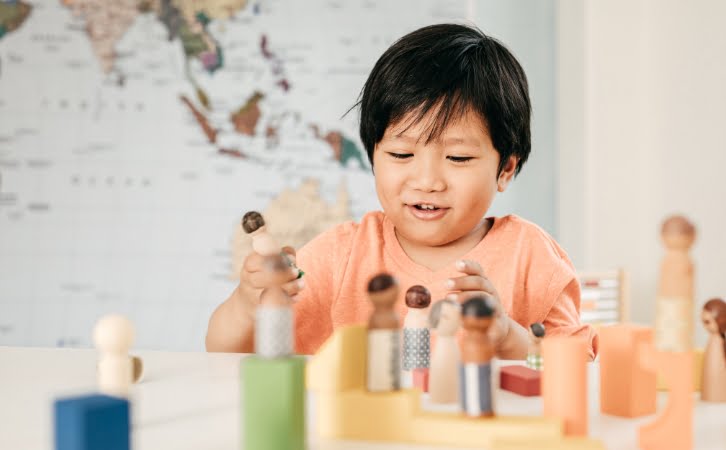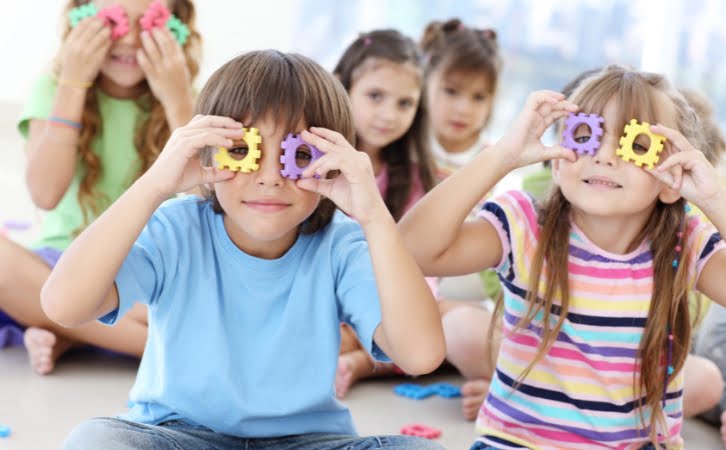Childhood is a time of exploration, curiosity, and learning. It’s amazing how much children can absorb through play and interactive activities. As a parent or caregiver, you play a vital role in shaping your child’s early years of development. It’s never too early to introduce your preschooler to science concepts.
Science activities for preschoolers can be fun and engaging when presented playfully. You can help your child discover the world around them with creativity and a few household items. In this article, we’ll share 5 science activities for preschoolers that will spark their curiosity and love for learning.
Read Here: 10 Sensory Activities for Preschoolers
Benefits of Learning Through Play
Learning through play has numerous benefits, including cognitive, emotional, and social development. Children are natural scientists; they are curious and always eager to explore the world around them. By engaging in science activities, preschoolers will learn to ask questions, investigate, analyze, and communicate their findings. The skills they learn through these activities will help them succeed in school and in life.
💡 Key Takeaway: Introduction to the importance of learning through play in science and how it can contribute to the child’s overall development.
Read Here: Preschool Activities for Indoor Playtime
5 Science Activities for Preschoolers
A. Sink or Float Experiment
The Sink or Float Experiment is a fantastic hands-on science activity for preschoolers. By playing with water and objects of different densities, children can learn all about buoyancy and predict whether objects will sink or float. This simple physics experiment is not only educational but also a lot of fun for young children. Engage their senses by adding a packet of colored scents to the water, making the activity even more exciting.
1. Objective of the Experiment
The Sink or Float Experiment aims to teach preschoolers the concept of density and buoyancy. Through this experiment, children will learn to determine whether an object will sink or float in water based on its density. This activity encourages critical thinking and observational skills in a fun and interactive way.

Read Here: How To Encourage Creativity In Kids?
2. Steps to Conduct the Experiment
To conduct the Sink or Float Experiment, follow these steps:
- Fill a container with water.
- Gather various objects and ask the preschoolers to predict whether each object will sink or float.
- Have the children individually drop the objects into the water and observe what happens.
- Discuss the results, noting the similarities and differences between the objects that sank and floated.
This hands-on activity encourages children to use their observation and prediction skills while learning about buoyancy.
3. Discussion of the Results
After conducting the Sink or Float Experiment, preschoolers can engage in a discussion of the results. This discussion allows them to reflect on their observations and conclude why certain objects sank or floated.
By encouraging them to explain their findings, teachers can foster critical thinking skills and scientific reasoning in young children. This activity promotes hands-on learning and encourages children to make connections between their experiments and real-life situations. Overall, the Sink or Float Experiment provides preschoolers with a fun and engaging way to explore basic scientific concepts.
B. Magnetic Exploration
Magnetic Exploration is a fantastic activity to introduce preschoolers to the world of magnets. It’s fun, easy, and can be done with materials you already have at home. Kids can play and learn simultaneously by setting up a science table with various magnetic objects. They can observe which items are magnetic and which aren’t and even use a magnetic wand to explore their surroundings. This hands-on experience will keep them engaged and excited about science.
1. Objective of the Activity
A. Sink or Float Experiment: This activity aims to teach preschoolers about the concept of buoyancy and density by experimenting with objects to see if they sink or float in water. This hands-on experiment encourages curiosity and critical thinking as children make predictions and observe the results. It also promotes sensory exploration and develops fine motor skills by manipulating objects. Through this activity, preschoolers learn important scientific concepts in a fun and engaging way.
2. Materials Required
To conduct the Sink or Float Experiment, you will need a basin filled with water and various objects such as plastic toys, coins, and fruit. For Magnetic Exploration, gather materials like magnets, paper clips, and objects made of different materials. To create a Rainbow Density Jar, you will need a transparent jar, colored liquids of different densities (such as colored water, oil, and syrup), and a pipette. Lastly, gather balloons, baking soda, vinegar, and a funnel for the Balloon Blow-Up Science activity.

3. Steps to Conduct the Activity
Follow these simple steps to conduct the Sink or Float Experiment with preschoolers. First, gather various objects such as toys, fruits, and household items. Next, fill a basin or tub with water. Then, ask the children to predict whether each object will sink or float and have them place the objects in the water to test their hypotheses. Finally, discuss the results with the children, helping them understand the concept of buoyancy. This activity is a fun and hands-on way for preschoolers to learn about the properties of objects and how they interact with water.
4. Discussion of the Results
The Sink or Float Experiment results showed that preschoolers could identify objects that would sink or float in water. This activity helped them develop their understanding of density and buoyancy. In the Magnetic Exploration activity, children could explore magnets and their properties.
They learned about attraction and repulsion and how magnets can move objects. The Rainbow Density Jar activity helped children understand the concept of density by layering different liquids of varying densities.
Finally, the Balloon Blow-Up Science activity taught preschoolers about the properties of air and how it can inflate balloons. These science activities provided hands-on learning experiences that enhanced the children’s understanding of scientific concepts.
C. Rainbow Density Jar
C. Rainbow Density Jar: This activity is a fun and engaging way to teach preschoolers about density. You can create a beautiful rainbow in a jar with just a few simple materials. By layering different liquids of varying densities, you can demonstrate how they stay intact without mixing. This hands-on experiment is educational and visually appealing, making it a perfect activity for preschoolers to learn through play.
1. Objective of the Activity
One of the activities for preschoolers that promotes learning through play is the Sink or Float Experiment. This activity aims to teach children the concept of density and buoyancy. This experiment will teach children to observe and predict whether objects sink or float in water. This hands-on experiment encourages critical thinking and problem-solving skills in a fun and engaging way.
2. Materials Required
To conduct the magnetic exploration activity, you will need various materials. These include magnets, items made of different materials (such as plastic, wood, or metal), and a sorting tray. The magnets will be used to explore which items are attracted to them and which are not. This activity allows preschoolers to engage in hands-on learning and discover the properties of different materials.
3. Steps to Conduct the Activity
To conduct the Sink or Float Experiment, you’ll need a bucket of water, various objects, and a chart to record your findings. Start by having your preschooler choose an object and predict whether it will sink or float. Then, place the object in the water and observe what happens. Encourage your child to take notes and discuss their findings, promoting critical thinking and scientific exploration. This hands-on activity is a great way to engage your little one with science concepts.
4. Discussion of the Results
Discussing the results is an essential part of these science activities for preschoolers. It allows children to reflect on what they observed and experienced during the experiments.
By discussing the results, children can better understand the scientific concepts at play and develop critical thinking skills.
This process also encourages them to ask questions and make connections between their observations and real-life situations. Overall, discussing the results promotes an active and engaging learning experience for preschoolers.
D. Balloon Blow-Up Science
Blowing up a balloon using science is not only a fun activity for preschoolers but also teaches them about chemical reactions and states of matter. By mixing baking soda and vinegar, children can witness the formation of carbon dioxide gas, which inflates the balloon. This hands-on experiment engages young learners and helps them develop analytical and problem-solving skills. It’s an easy and exciting way to introduce science concepts to preschoolers.
1. Objective of the Activity
The Sink or Float Experiment aims to introduce preschoolers to the concept of density and buoyancy. By testing different objects and observing whether they sink or float in water, children can develop an understanding of these scientific principles. This activity engages their curiosity and encourages them to make predictions and analyze the results, fostering their critical thinking skills. It’s a fun and interactive way for preschoolers to learn about the properties of objects
2. Materials Required
To conduct the Magnetic Exploration activity, you will need various materials. These include paper clips, coins, buttons, and magnets. You will also need small containers or bags to hold the objects. Additionally, you might want to have a magnetic wand or a strong magnet to help with the exploration. These materials can easily be found at home or purchased at a local store.
3. Steps to Conduct the Activity
To conduct the Sink or Float Experiment, follow these steps. First, gather various objects and a large container filled with water. Next, ask the preschoolers to predict whether objects will sink or float. Then, have them individually place the objects into the water and observe the results. Finally, discuss the reasons behind the objects’ buoyancy. This hands-on activity allows children to explore the concept of density.
4. Discussion of the Results
After conducting the Sink or Float experiment, preschoolers can engage in a discussion of the results. They can share their observations and conclusions about which objects sank and which floated.
This discussion encourages critical thinking skills and helps children understand the concept of buoyancy. Preschoolers can deepen their understanding of scientific principles playfully and interactively by discussing their findings.
E. Growing a Garden
If you want to teach your preschooler about science while also helping them develop a love for nature, then growing a garden is a perfect activity. Planting, watering, and caring for a garden have many benefits, such as teaching patience, responsibility, and nurturing skills. Here is a step-by-step guide for creating a garden with your little ones:
Materials Required
- Soil
- Garden bed or pots
- Seeds or seedlings
- Watering can
- Gardening tools (optional)
Steps to Conduct the Activity
- Choose the location for your garden. A sunny spot with well-draining soil is ideal.
- Prepare the soil by removing any rocks, weeds, or debris.
- Have your child help plant the seeds or seedlings according to the instructions on the package.
- Water the plants regularly, and teach your preschooler how to check the soil’s moisture level to prevent over or under-watering.
- Have your child tend to the garden by removing dead leaves, picking weeds, or checking for insects.
Discussion of the Results
This activity teaches your child about the science of plant growth and encourages them to appreciate and care for the environment. Who knows, they may even develop a green thumb and harvest their own fruits and vegetables in the future!
Top 5 Easy Science Experiments for kids to do at home with Ryan’s World! video
Conclusion
In summary, incorporating science activities into preschoolers’ playtime is an excellent way to help them develop cognitive and problem-solving skills. The five activities listed above are all fun and educational ways to teach children about scientific concepts and phenomena.
By exploring these hands-on activities, preschoolers can develop their fine motor, observation, and critical thinking skills while having fun. Learning through play is a highly effective way to retain information, and these science activities are a great example of how easy and accessible education can be.
Additionally, observing the world around them and asking why things work the way they do can satisfy their curiosity and lead to a lifelong love of learning. Encouraging children’s curiosity and creativity is essential and helps them understand and respect the world they are in and all the living things that call it home.


